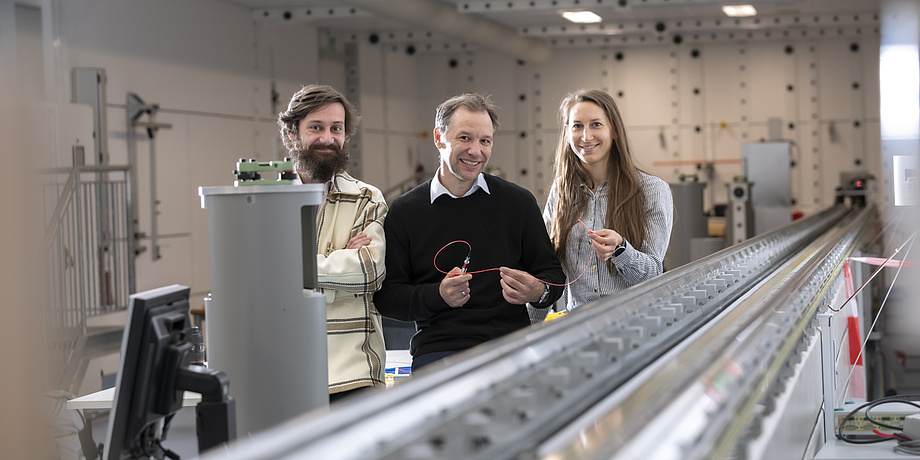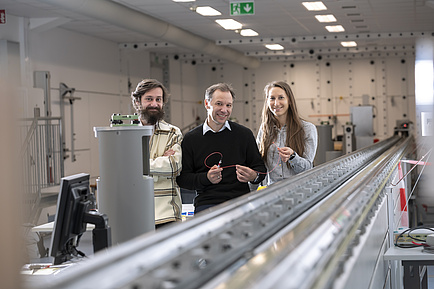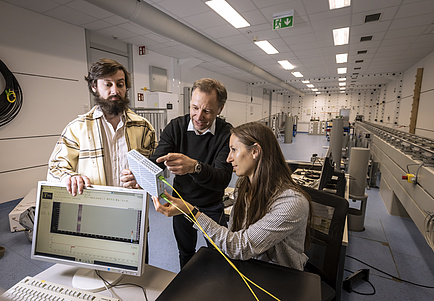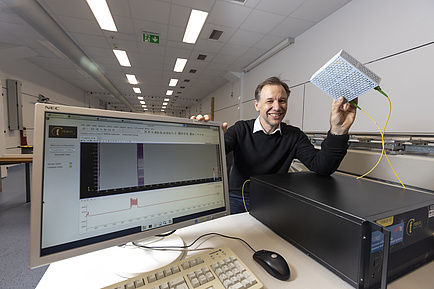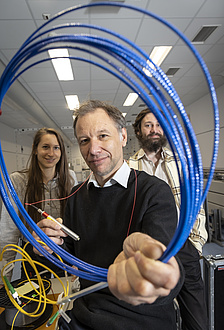Landslides and rockfalls are increasingly becoming a real threat to people and infrastructure in light of the changing climate and the associated changes in soil and rock structure. The more precise the measurement, the earlier hazards can be detected, and consequently damage can be limited or even avoided altogether.
A team at the Institute of Engineering Geodesy and Measurement Systems (IGMS) at Graz University of Technology (TU Graz) has developed a measurement method which uses existing fibre optic cables to detect, localise and classify environmental events. In addition, the method can also detect signs of fatigue in infrastructures, fires, leaks or earthquakes – all of this can be observed along the entire fibre, not just at individual measuring points. This complete coverage lacking in blind spots represents a unique advantage over conventional measuring methods.
Shining light through dark fibres
This technology is already being used to monitor tunnel linings in the Koralm Tunnel, the Semmering Base Tunnel and the Brenner Base Tunnel, among others. In the same way, it can ensure the safe operation of bridges and other civil infrastructure. Due to the high sensitivity of the measurements, it was even possible to detect the severe earthquake in Turkey and Syria in February 2023 on a fibre optic test track between Campus Alte Technik and Campus Neue Technik at TU Graz. In principle, the measurement method can be applied wherever fibre optic lines are present. Fibres not used for telecommunications purposes – so-called dark fibres – are suitable for these measurements. This is also the case along railway lines or roads that are threatened by falling rocks, so that an alarm can be triggered immediately if stones have fallen onto the track or roadway.
The measurements are based on light pulses sent into a spare fibre of the line and are evaluated upon their return. Depending on the chosen evaluation method, three effects can be measured: acoustic signals or vibrations, temperature fluctuations, and slow changes in strain. When three fibres are available, all three effects can be determined simultaneously; if only one fibre is available, only the monitoring of one effect is possible or the methods have to be alternated. One measuring device – the so-called interrogator – covers about 40 kilometres of measurement in both directions, so about 80 kilometres of fibre can be observed per device.
Every nanometre counts
“We send light at a certain wavelength into the fibre and analyse the reflected spectrum. When the light pulse returns, it normally has the same wavelength as before. When something happens in between, however, non-linear effects occur, which appear as slightly offset wavelengths or intensity variations. Depending on the measurement method, I can use these changes and the runtime of the signal to determine at which point of the measured fibre a vibration, temperature change or strain change has occurred. As we have shown in both laboratory and field measurements, the sensitivity of our measurements is in the nanometre range, which means that even the smallest changes can be detected,” explains Werner Lienhart, head of the Institute of Engineering Geodesy and Measurement Systems at TU Graz.
To detect an event such as a rockfall or landslide, it does not have to occur in the immediate vicinity of the fibre. Events that happen a few hundred metres away can also be detected. For the exact positioning, the researchers look at the time offset at which the same event can be observed at different locations along the measurement path. This can be used to triangulate the position of the event and, if necessary, an additional measuring line can be laid on site for closer monitoring.
Would you like to receive the latest stories, news, research stories, interviews or blog posts from TU Graz directly on your smartphone or in your email inbox? Subscribe to the TU Graz Telegram newsletter free of charge.
